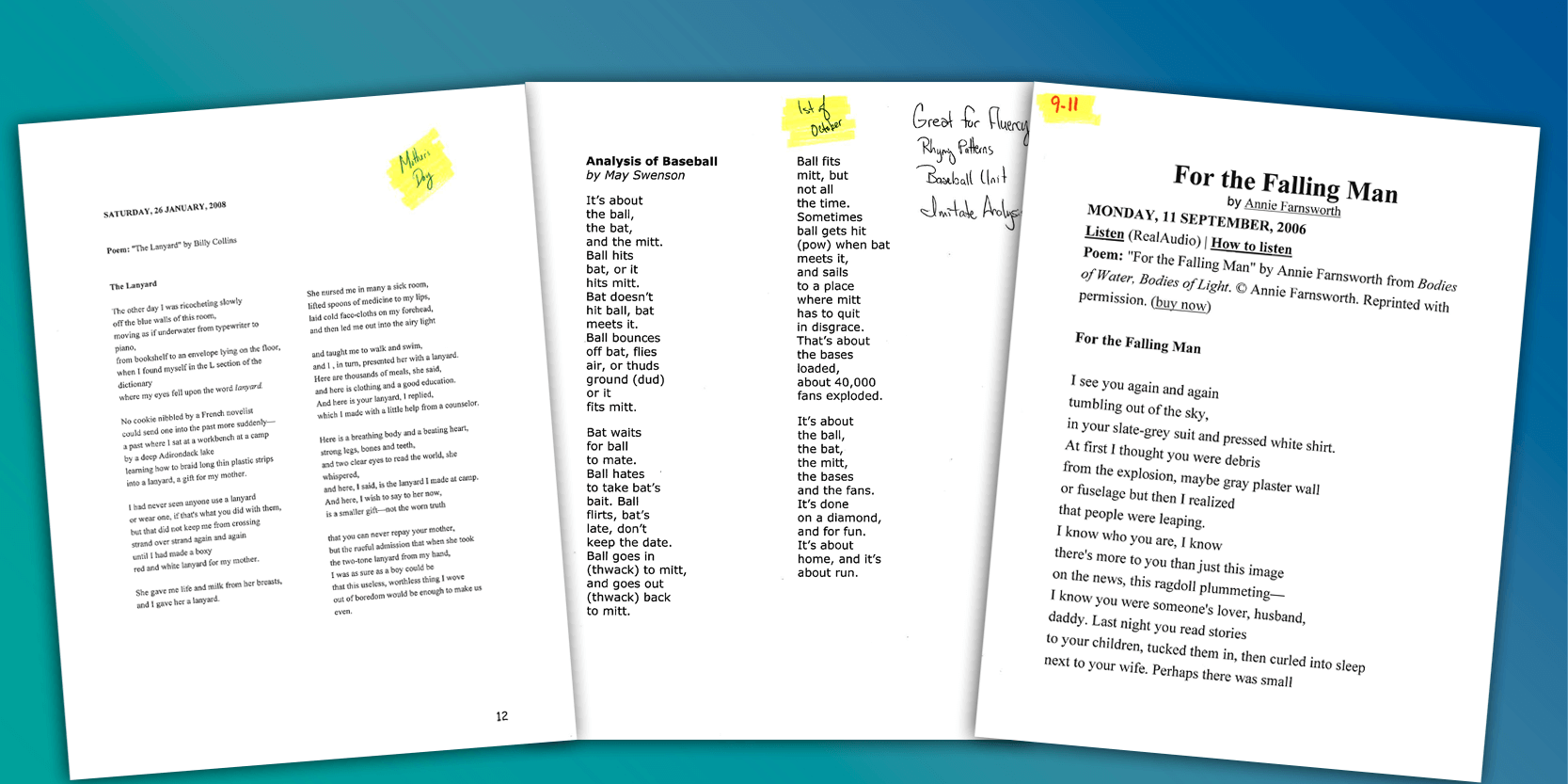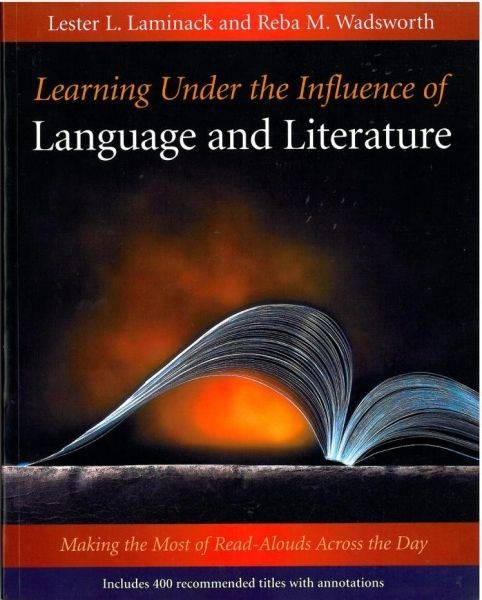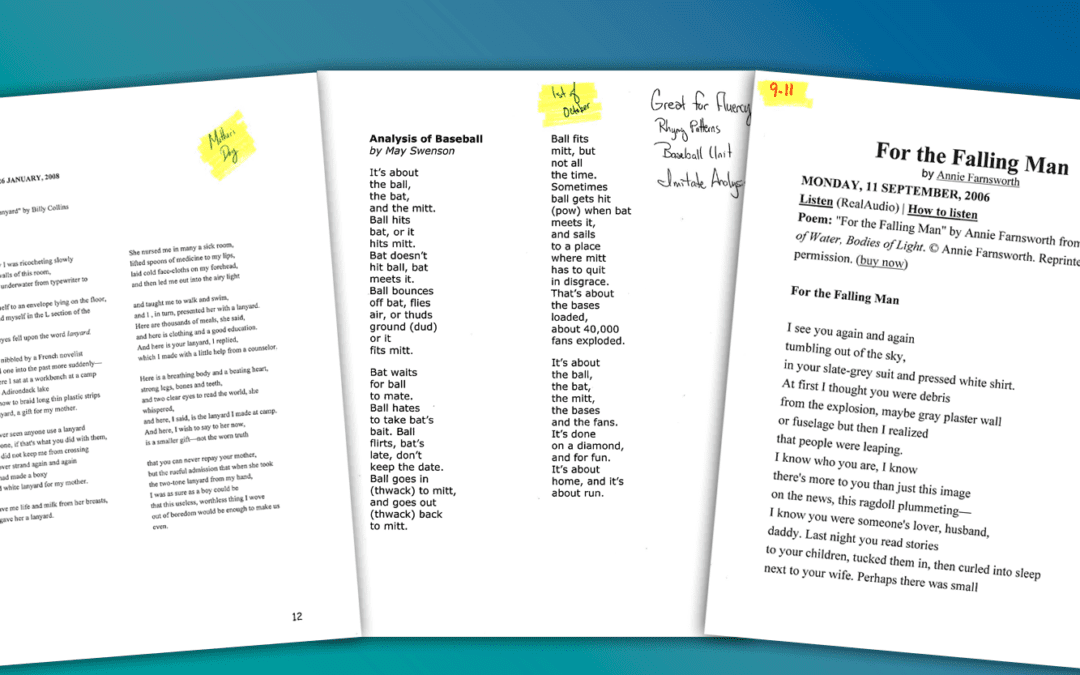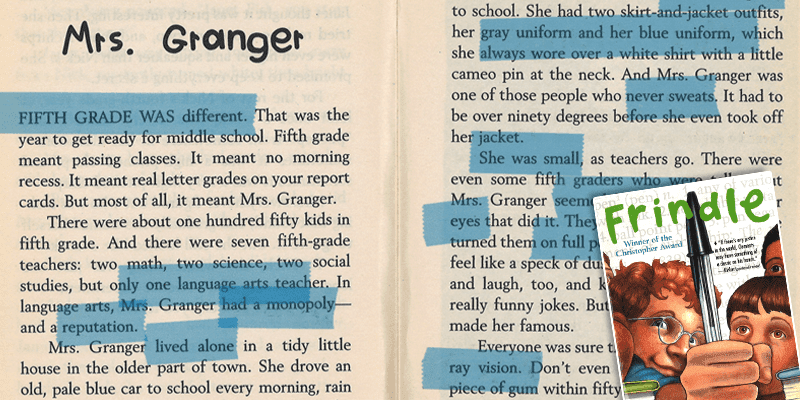Learning Center
writing
Celebrate National Poetry Month all year long
April 24, 2013

Although April is the official month for celebrating poetry, consider the power of incorporating a daily dose of poetry into your classroom. Flint Springs Elementary (Huntington, IN) teacher, John Stoffel recently shared his personal purple poetry portfolio that is two years in the making–and still a work in progress.
John’s intent is to teach his students that language is fun and they can learn from it, too. Whether that’s learning to write better, read better, or deepen their understanding of content-area concepts, he weaves a poetry read aloud into every day of the school year.
But it’s more than just finding a poem to read. John has belabored over his collection–including its organization. Many of the poems are housed within the first section–a timeline of topics, holidays, months, and seasons. For example, he has a first-day-of-school poem about worry and anxiety, September 11 poems, an Election-Day poem, a first-day-of-spring poem, a last-day-of-school poem, etc. Each of these tap the emotions, thoughts, feelings, and events in his students’ lives as they are living and experiencing them all year long.
However, beyond these seasonal and timely poems, John has incorporated other categories that target additional instructional purposes as well.
- There is a poems to mimic section, that includes examples he reads and then dissects with the students. After noticing the author’s craft and the poem’s unique structure, John challenges his students to write parallel versions of their own.
- The writer’s workshop language section includes poems that lend themselves to conventions/grammar lessons (e.g., subject/verb agreement, varied punctuation, etc.). In addition, there are poems that have noteworthy details for the traits of word choice, ideas, and voice lessons, too.
- Poetry PortfolioWithin the life skills section are poems that target different lifelong guidelines (e.g., patience, caring, trustworthiness, humor, common sense, etc.). He has found these poems are a great way to begin instruction on theme and later determining the author’s message in reading.
- When targeting content-area units, he flips to the section with the poems about African Americans, math fractions, life science, and other concepts he teaches. An early-in-the-day poetry read-aloud connects to a later-in-the-day content-area lesson.
- There is a small section of author’s quotes that includes writers reflecting on the art of writing. These thoughts and insights provide great conversation and inspiration.
- Not knowing where to put all the other fun favorites he’d collected over the years, John started a just for fun section of well-loved poems that didn’t fit any other category.
Sometimes John photocopies a class set of the poem so each of his students can read along. This is imperative for the poems to mimic or those he wants to choral read for fluency. They also need a copy when John wants to read a poem closely and multiple times, each time rereading it for a different reading purpose.

Most poems, however, are simply presented as a read-aloud. And because of this, John hasn’t spent hours retyping poems and making them “look pretty.” This purple 3-ring binder is truly a working portfolio that includes the best of the best that John has compiled over time.
His collection is constantly changing as he adds, replaces, and rearranges poems into different sections. He prints things from the Internet, copies pages from books, and saves scraps he’s torn from newspapers and magazines.
He has scribbled personal notes and questions to pose to his students. He has jotted reminders to himself and circled relevant phrases. He loves each poem he has added to his collection and conveys that love during each day’s read-aloud.
As writing experts Lester Laminack and Reba Wadsworth reiterate:
We must put the music of written language in the air if our students’ ears are to arrest its rhythm. And their ears must arrest the rhythm of language if their voices are ever to echo it. And their voices must echo that rhythm and music if their pencils are ever to capture it. (Learning Under the Influence of Language and Literature: Making the Most of Read Alouds Across the Day, Lester Laminack and Reba M. Wadsworth, p 85)





